Development of Experimental Apparatus for Fire Resistance Test of Rechargeable Energy Storage System in xEV
Abstract
1. Introduction
2. Prototype Test Apparatus and Its Experimental Results
2.1. Description of Prototype Test Apparatus
2.2. Uniformity of Mass Flow Rate in Burners
2.3. Fire Resistance Test of Prototype Test Apparatus
3. CFD Analysis
3.1. Simulation Method
3.2. Validation on Experimental Results of Prototype Test Apparatus
3.3. Proposals of Test Apparatus
3.4. Simulation for Newly Proposed Test Apparatuses
4. Experiment on the Finally Selected Test Apparatus
5. Conclusions
Acronyms and Symbols
| CFD | Computational fluid dynamics |
| DUT | Device under test |
| EDM | Eddy dissipation model |
| EVS | Electric vehicle safety |
| GTR | Global technical regulation |
| IWG | Informal working group |
| KMVSS | Korea Motor Vehicle Safety Standard |
| LPG | Liquefied petroleum gas |
| REESS | Rechargeable energy storage system |
| UN | United Nations |
| WSGGM | Weighted-sum-of-gray-gases model |
| xEV | All types of electrical vehicles |
| , | Empirical constants of EDM |
| Effective mass diffusion coefficient | |
| Enthalpy | |
| Symbol denoting species n | |
| Molecular weight of product | |
| Molecular weight of the leanest reactant | |
| Static pressure | |
| Volumetric heat source by chemical reaction | |
| Production rate of species by chemical reaction | |
| , , | Velocity in , , and direction, respectively |
| , , | Spatial coordinate in , , and direction, respectively |
| Mass fraction of species | |
| Mass fraction of product | |
| Mass fraction of the leanest reactant | |
| Effective thermal diffusion coefficient | |
| Dirac delta function | |
| Turbulent dissipation rate | |
| Turbulent kinetic energy | |
| Viscosity | |
| Stoichiometric coefficient for reactant | |
| Stoichiometric coefficient for product | |
| Density |
Author Contributions
Funding
Conflicts of Interest
References
- Harighi, T.; Bayindir, R.; Padmanaban, S.; Mihet-Popa, L.; Hossain, E. An overview of energy scenarios, storage systems and the infrastructure for vehicle-to-grid technology. Energies 2018, 11, 2174. [Google Scholar] [CrossRef]
- Mihet-Popa, L.; Saponara, S. Toward green vehicles digitalization for the next generation of connected and electrified transport systems. Energies 2018, 11, 3124. [Google Scholar] [CrossRef]
- Un-Noor, F.; Padmanaban, S.; Mihet-Popa, L.; Mollah, M.N.; Hossain, E. A comprehensive study of key electric vehicle (EV) components, technologies, challenges, impacts, and future direction of development. Energies 2017, 10, 1217. [Google Scholar] [CrossRef]
- UNECE. Proposal of Fire Resistance Test. EVS-02-07e. 2012. Available online: https://wiki.unece.org/display/trans/EVS+2nd+session (accessed on 16 September 2019).
- UNECE. Progress Report of TFG 7-Fire Resistance Test. EVS-05-17e. 2014. Available online: https://wiki.unece.org/display/trans/EVS+5th+session (accessed on 16 September 2019).
- UNECE. Korea Research Results-Fire Resistance Test. EVS-06-26e. 2014. Available online: https://wiki.unece.org/display/trans/EVS+6th+session (accessed on 16 September 2019).
- UNECE. Korea Research Results-Fire Resistance Test. EVS TF-02-24e. 2015. Available online: https://wiki.unece.org/display/trans/2nd+EVS+Task+Force+meetings+in+Paris (accessed on 16 September 2019).
- UNECE. Korea Research Results-Fire Resistance Test.EVS TF-03-28e. 2015. Available online: https://wiki.unece.org/pages/viewpage.action?pageId=25270993 (accessed on 16 September 2019).
- Miao, Y.; Hynan, P.; Jouanne, A.; Yokochi, A. Current Li-ion battery technologies in electric vehicles and opportunities for advancements. Energies 2019, 12, 1074. [Google Scholar] [CrossRef]
- Hong, J.; Wang, Z.; Liu, P. Big-data-based thermal runaway prognosis of battery systems for electric vehicles. Energies 2017, 10, 919. [Google Scholar] [CrossRef]
- Plug-in Electric Vehicle Fire Incidents. Available online: https://en.wikipedia.org/wiki/Plug-in_electric_vehicle_fire_incidents (accessed on 8 January 2020).
- Jung, H.; Kim, K.; Lee, K.; Kwon, H. A Study on fire resistance test procedure for traction battery. In Proceedings of the 23rd International Conference of Enhanced Safety Vehicles, Seoul, Korea, 27–30 May 2013. Paper No. 13-0353. [Google Scholar]
- KMVSS, Traction Battery; Ministry of Land, Infrastructure and Transport: Sejong, Korea, 2018; Article No. 18-3.
- KMVSS Test Procedure, Traction Battery Safety Test; Ministry of Land, Infrastructure and Transport: Sejong, Korea, 2019; Annex 1—Part No. 48.
- UN/ECE/TRANS/180/Add13. Global Technical Regulation on Hydrogen and Fuel Cell Vehicles; United Nations: Geneva, Switzerland, 2013; GTR No.13; pp. 80–84. [Google Scholar]
- ANSYS Inc. Ansys Fluent Theory Guide; ANSYS Inc.: Canonsburg, PA, USA, 2013. [Google Scholar]
- Magnussen, B.F.; Hjertager, B.H. On mathematical models of turbulent combustion with special emphasis on soot formation and combustion. Proc. Combust. Inst. 1977, 16, 719–729. [Google Scholar] [CrossRef]
- Moon, B. A Study on Equivalence of Thermal Energy at Domestic and International Fire Resistance Test Standards for REESS. Master’s Thesis, Ajou University, Suwon, South Korea, July 2017. [Google Scholar]
- UN/ECE/TRANS/180/Add20. Global Technical Regulation on the Electric Vehicle Safety; United Nations: Geneva, Switzerland, 2018; GTR No. 20; pp. 98–102. [Google Scholar]

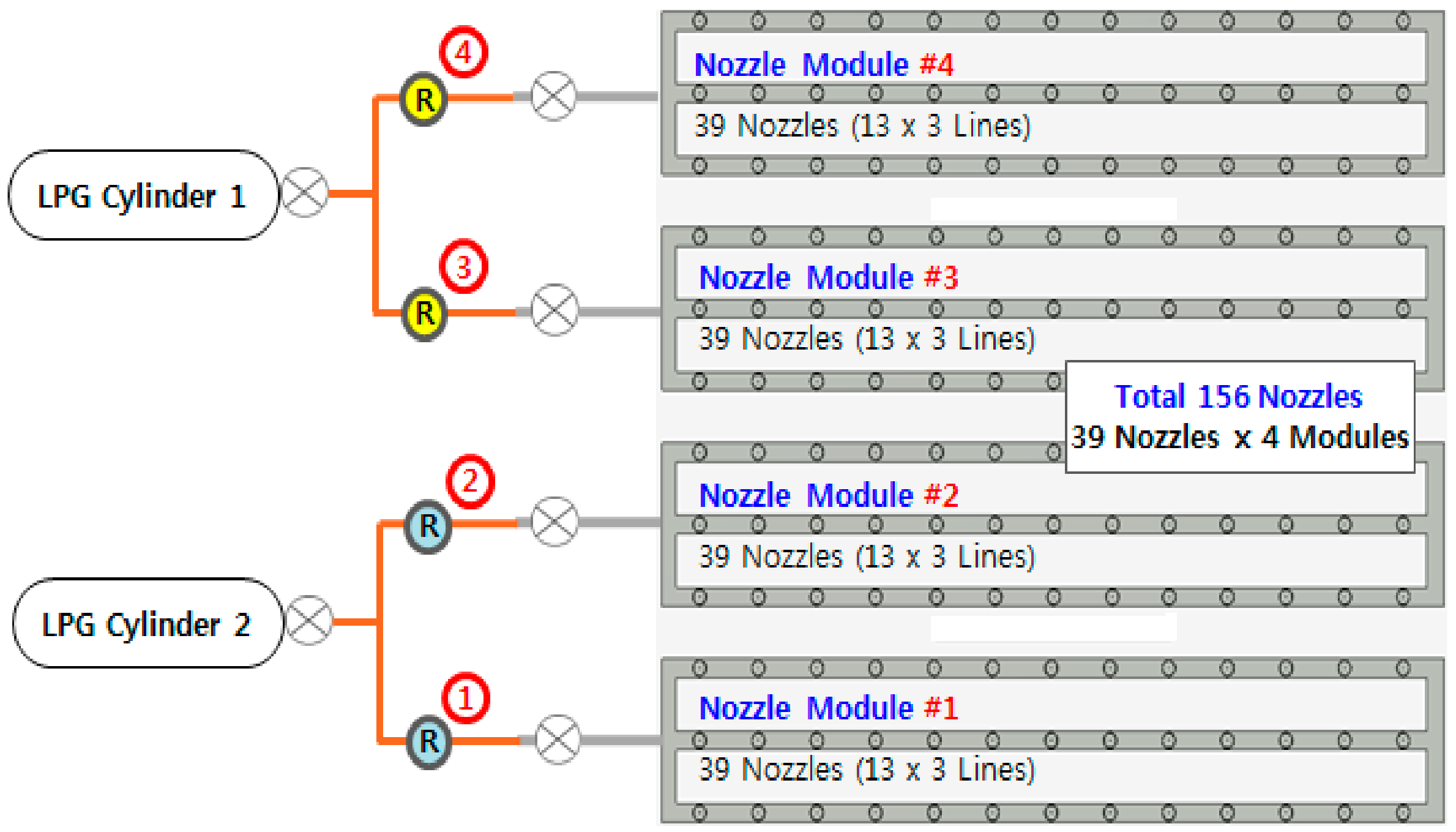

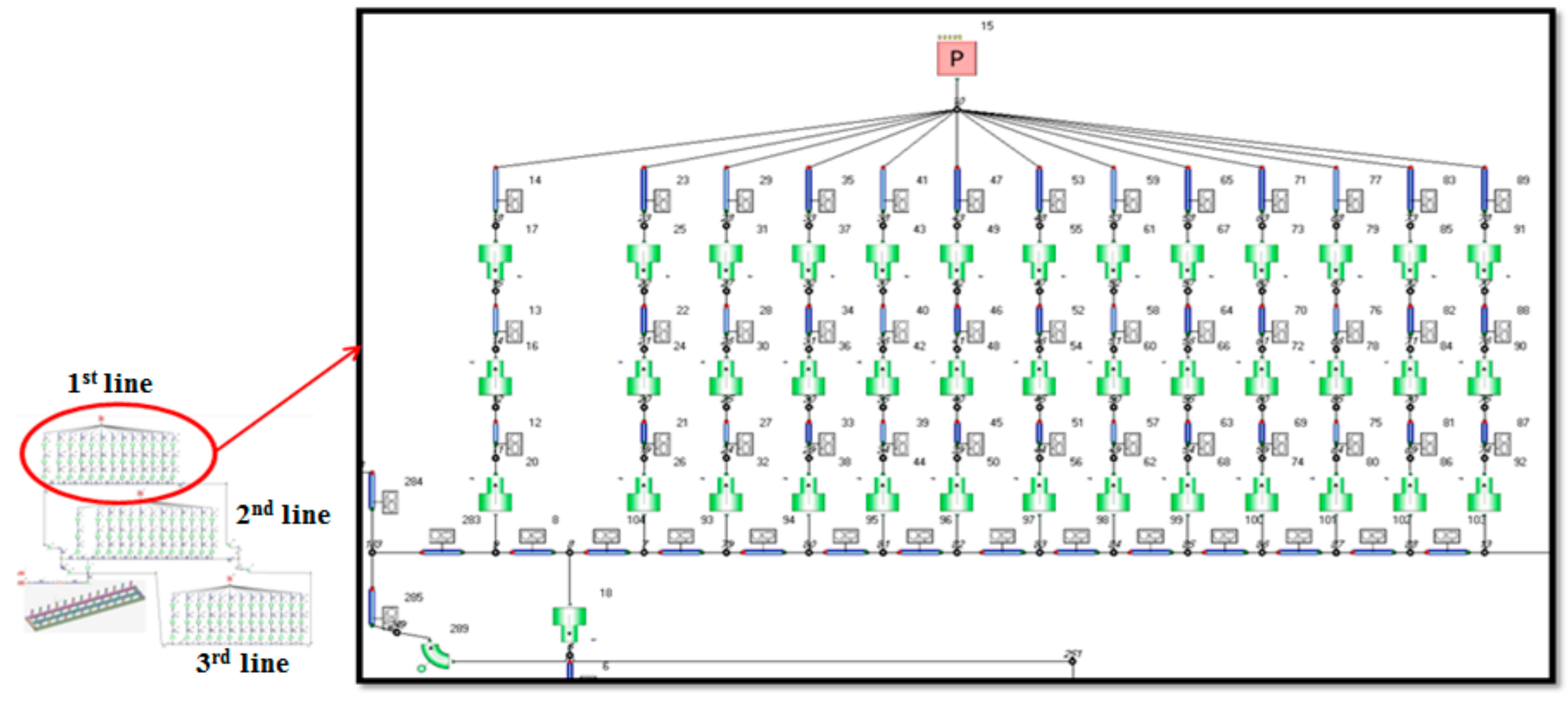
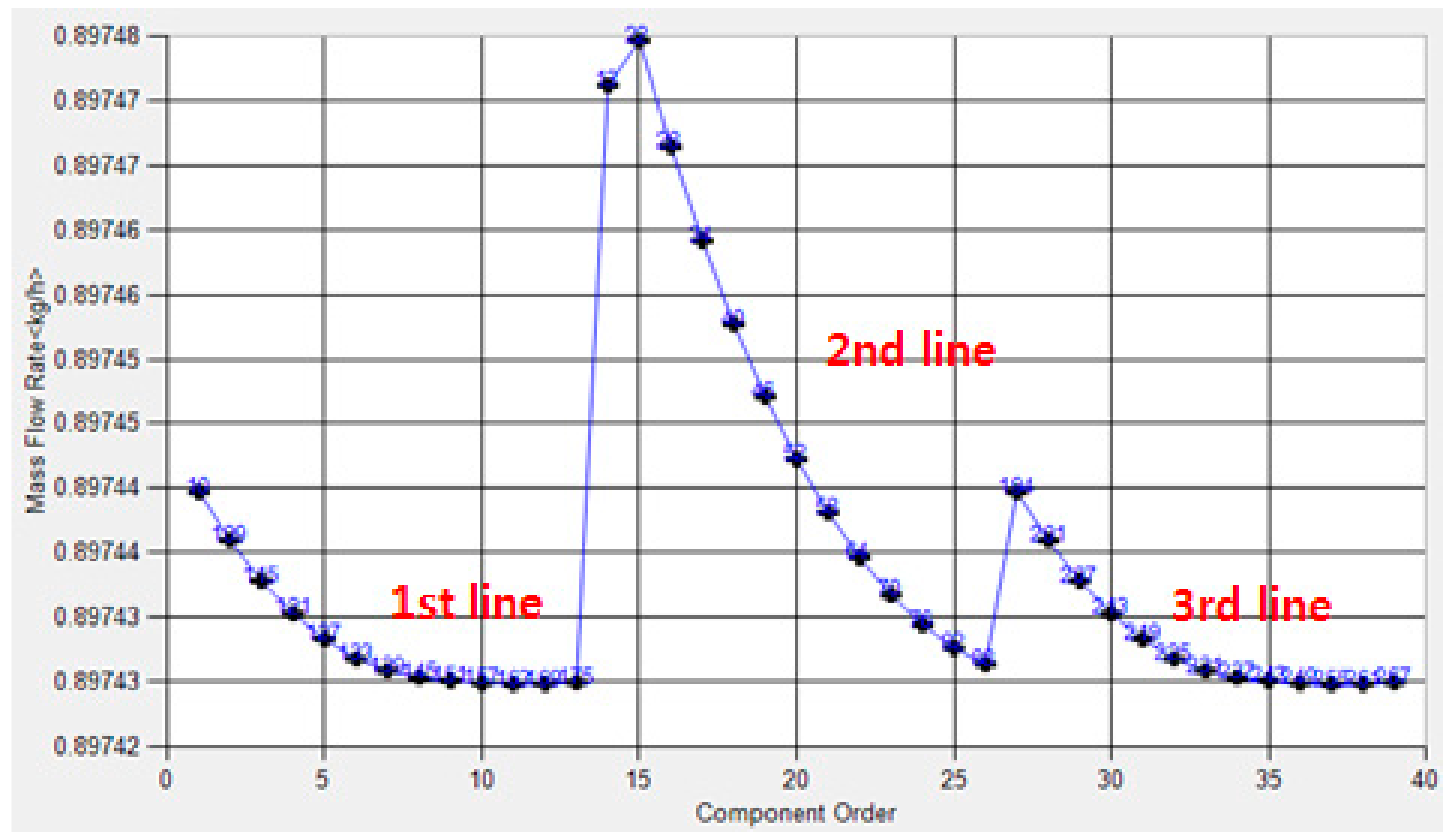

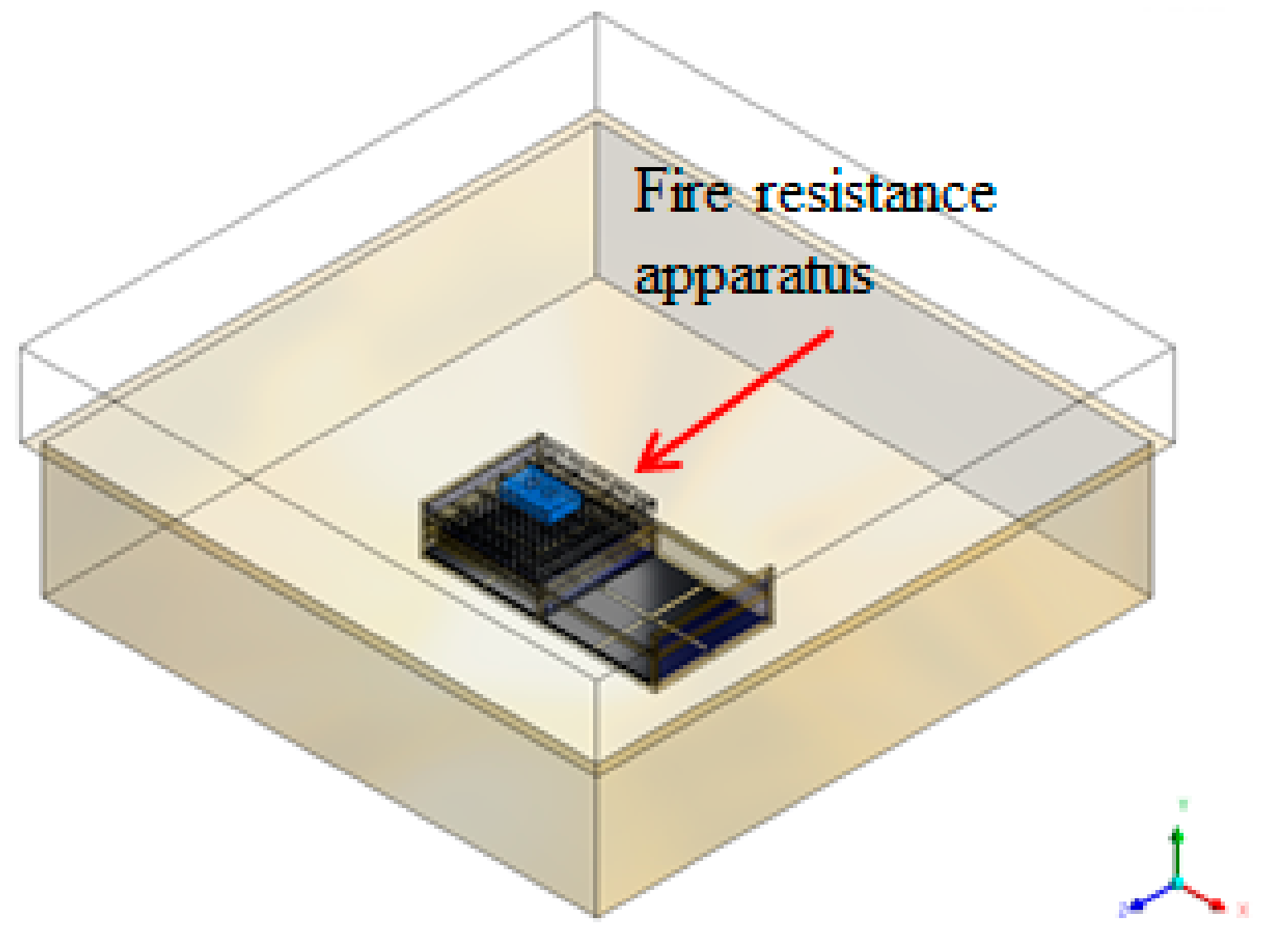
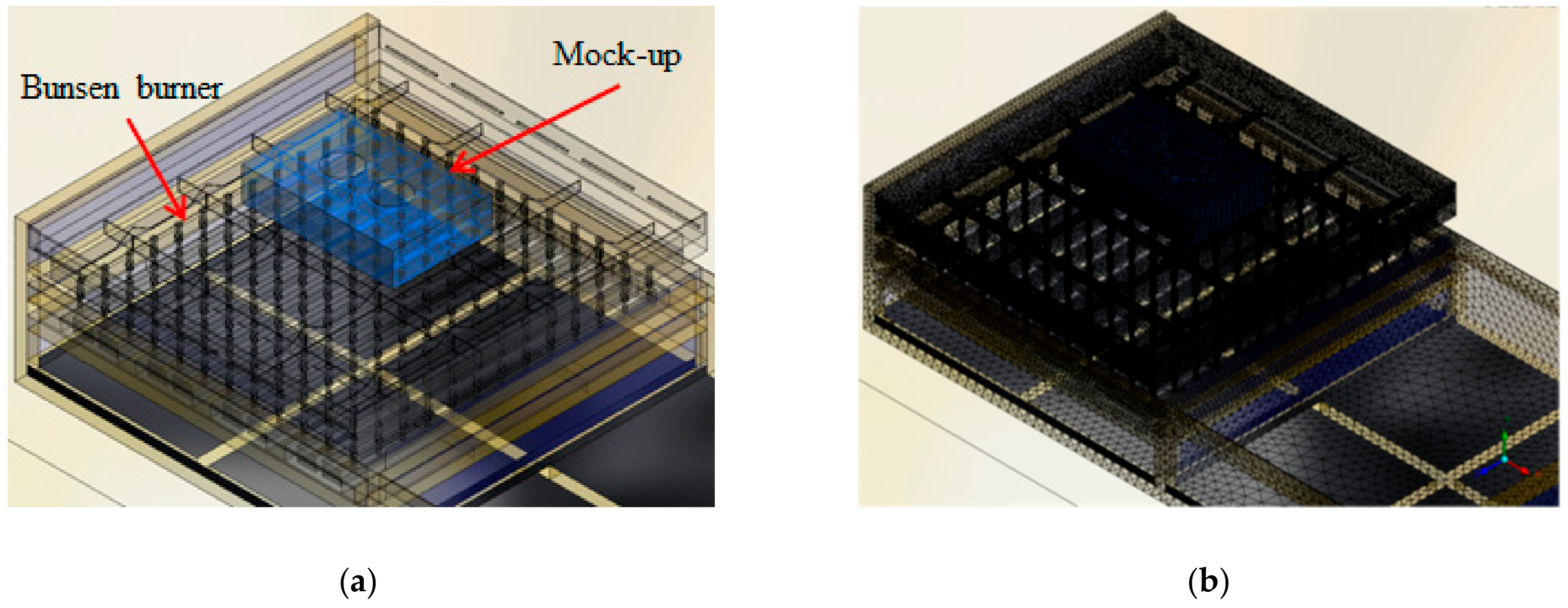

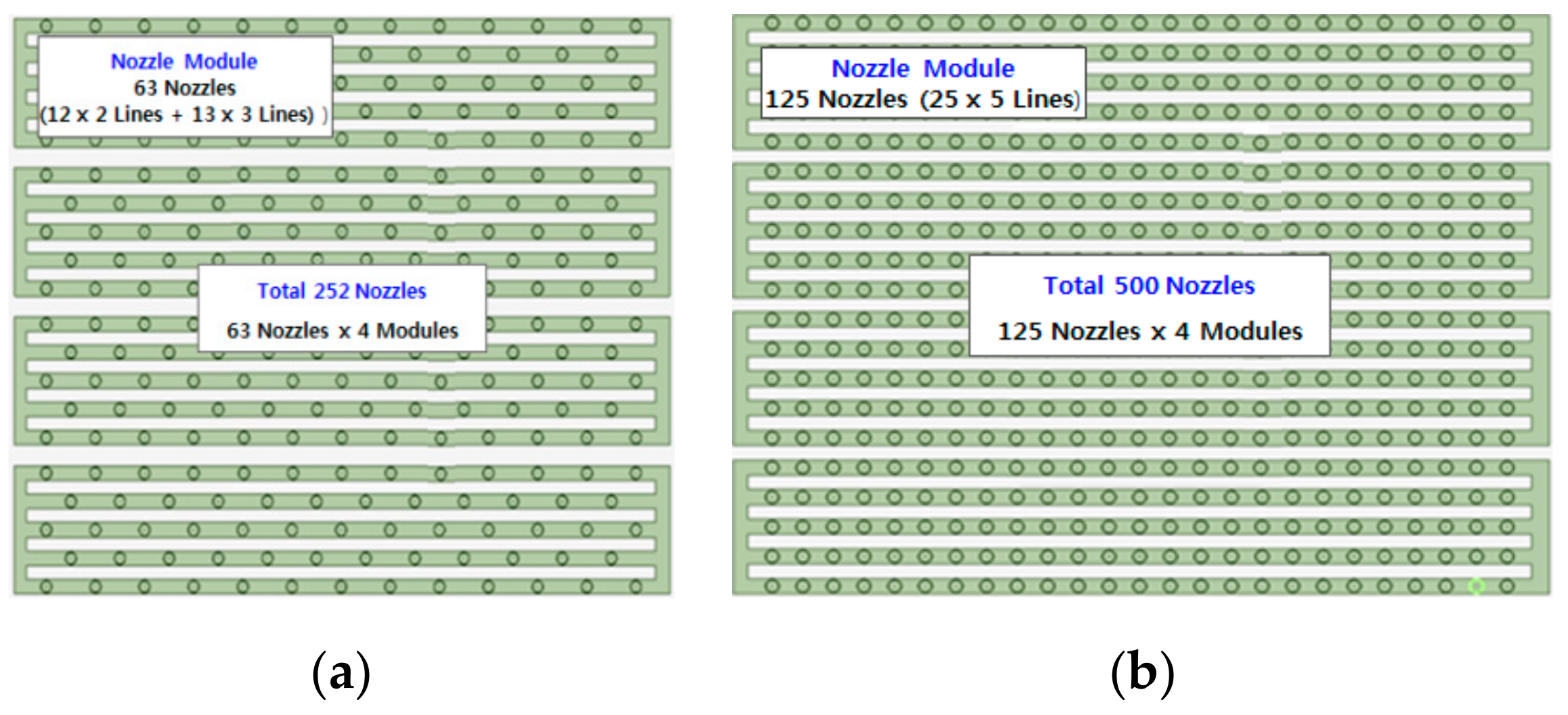
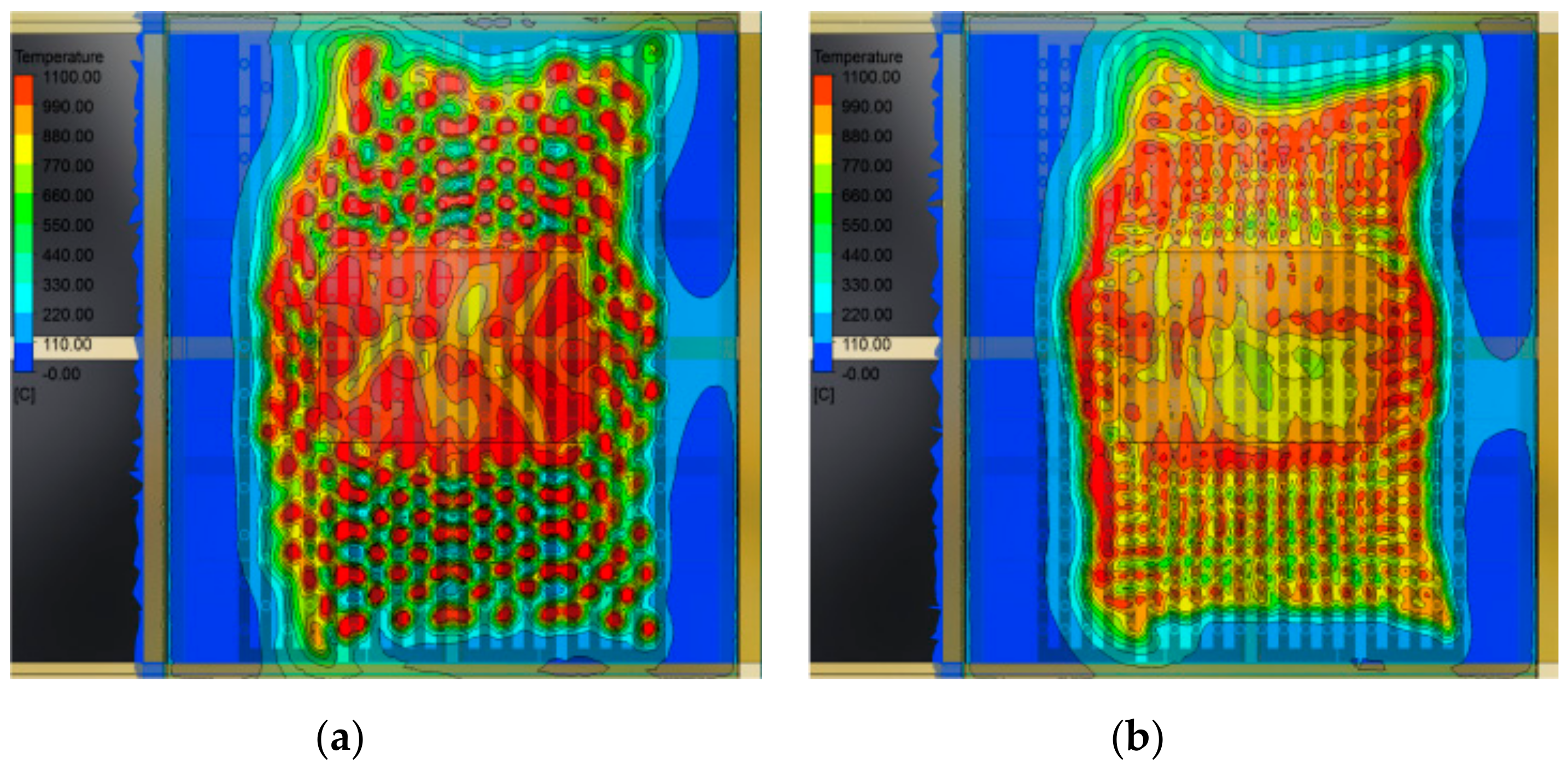
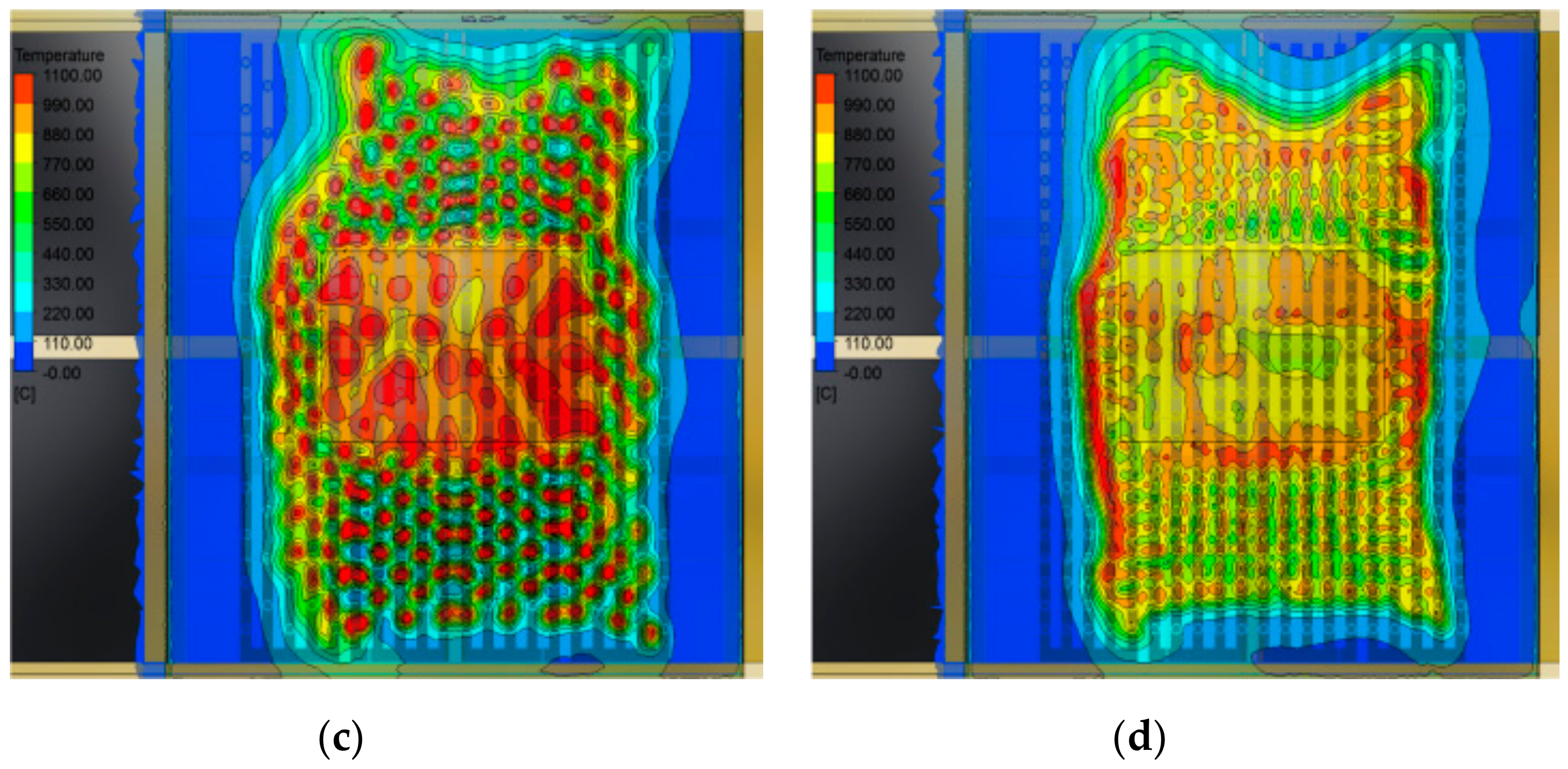
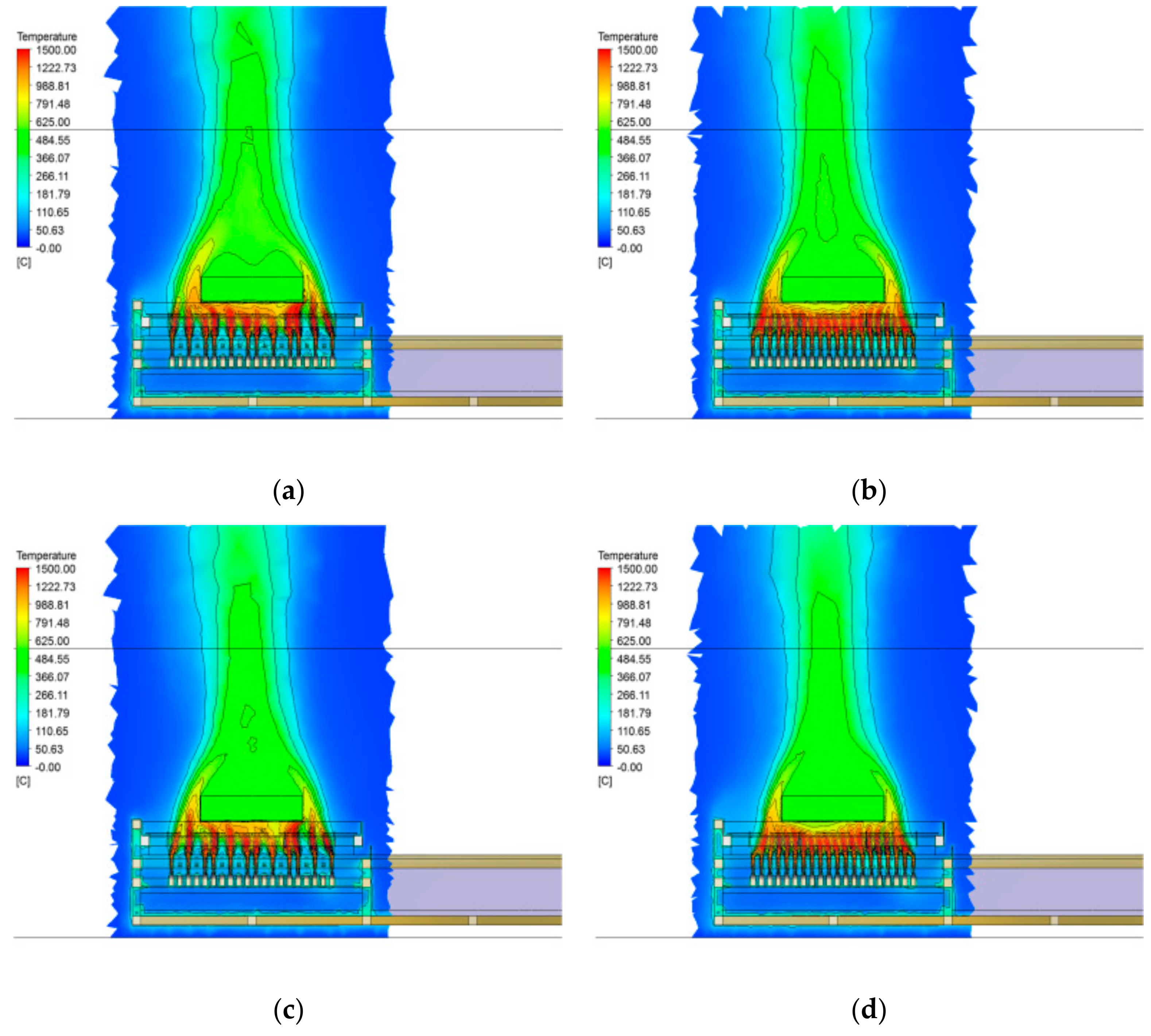


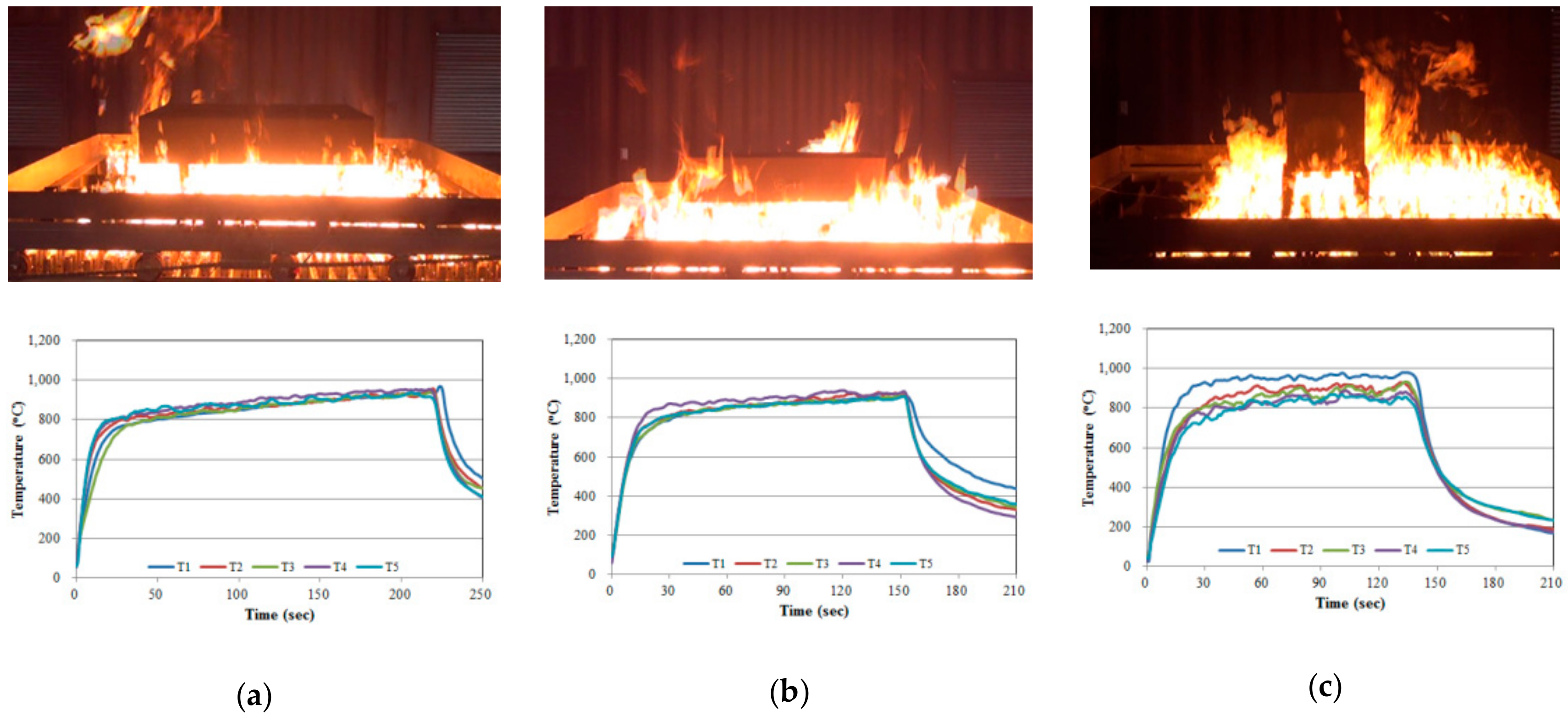
| 48. Traction Battery Safety Test 48.6.7 Fire resistance Test |
| ① Test purpose |
| The purpose of the current KMVSS fire resistance test is to confirm the ability of the traction battery to ensure evacuation time for the driver and passengers when the vehicle is on fire. The test procedures are as follows. |
| ② Test procedures |
|
| Left Half (Modules 1 & 2) | Right Half (Modules 3 & 4) | ||||||
|---|---|---|---|---|---|---|---|
| T2 (°C) | T3 (°C) | T4 (°C) | T1 (°C) | T5 (°C) | T6 (°C) | ||
| Experimental Results | 600‒820 | 400‒620 | 680‒940 | 840‒940 | 800‒940 | 840‒940 | |
| CFD analysis | 35 kg/h supply to modules 1 & 2 50 kg/h supply to modules 3 & 4 | 890‒920 | 670‒760 | 900‒920 | 930‒1000 | 1040‒1150 | 1020‒1270 |
| 15% fuel cut in each module | 770‒800 | 630‒650 | 820‒850 | 920‒950 | 970‒1100 | 1000‒1150 | |
| 30% fuel cut in each module | 710‒750 | 540‒590 | 750‒790 | 840‒900 | 940‒1050 | 940‒1100 | |
© 2020 by the authors. Licensee MDPI, Basel, Switzerland. This article is an open access article distributed under the terms and conditions of the Creative Commons Attribution (CC BY) license (http://creativecommons.org/licenses/by/4.0/).
Share and Cite
Jung, H.; Moon, B.; Lee, G.G. Development of Experimental Apparatus for Fire Resistance Test of Rechargeable Energy Storage System in xEV. Energies 2020, 13, 465. https://doi.org/10.3390/en13020465
Jung H, Moon B, Lee GG. Development of Experimental Apparatus for Fire Resistance Test of Rechargeable Energy Storage System in xEV. Energies. 2020; 13(2):465. https://doi.org/10.3390/en13020465
Chicago/Turabian StyleJung, Hyuk, Bohyun Moon, and Gwang Goo Lee. 2020. "Development of Experimental Apparatus for Fire Resistance Test of Rechargeable Energy Storage System in xEV" Energies 13, no. 2: 465. https://doi.org/10.3390/en13020465
APA StyleJung, H., Moon, B., & Lee, G. G. (2020). Development of Experimental Apparatus for Fire Resistance Test of Rechargeable Energy Storage System in xEV. Energies, 13(2), 465. https://doi.org/10.3390/en13020465





